Table of Contents
- Stain Remover for Carpet
- Disinfect Trash Bin
- Freshen Up Your Dish Sponge
- Disinfect and Deodorize Sports Equipment
- Clean and Sanitize Pet Cages
- Clean and Disinfect Remote Controls and Electronics
- Clean and Sanitize High Chairs
- Remove Rust from Metal
- General Sanitizing for Bacteria Prone Items
- Yeast infection in Dogs’ Ears*
- Get Rid of Bacteria in Your Shoes
- Tools for Manicures, Pedicures, and Body Care
- Contact Lens Cleaning
- Cleaning Dental Equipment
- Laundry
- Whiten Clothes
- Remove Sweat Stains and Brighten Discolored Areas
- Removing Organic Stains
- Freshening Up Lace and Linen
- Keep Your Fruits and Vegetables Fresh Longer
- Get Rid of Baked On Food
- Brighten Discolored Dishware
- Disinfect Kitchen Sponges
- Cutting Boards & Food Prep Areas
- Clean Up Your Refrigerator
- Insulated Bags and Coolers
- Get Rid of Mold and Mildew
- Spruce Up Your Flooring
- Lunch Boxes, Food Storage Containers, and Sealable Bags
- Cleaning and Whitening Your Dishwasher
- Keep Your Fish Tanks Clean of Bacteria and Fungus
- Boost the Health of Your Fish
- Brighten Up Tile Grout
- Put a Shine on Your Mirrors
- Get Rid of Dust Mites in Your Mattress
- Cleaning Kids’ Items and Pet Toys
- Cleaning and Sanitizing Your Bathroom
- Sanitize Your Humidifier and Dehumidifier
- Hydroponics
- Help Your Garden Grow
- Protecting Your Plants from Disease
- Give Oxygen to Growing Mushrooms
- Skunk Smell
- Enrich Your Plant Seeds
- Plant Health
- What’s in a Glow Stick?
- Water Purification
- Rocket Fuel
Discovered in 1818, Hydrogen Peroxide use has become a staple in households around the world. The familiar brown bottle can be found nearly everywhere and used for everything from disinfecting to plant growth.
The most common versions sold over the counter is the 3% solution for household use and a 6% to 10% used in some hair coloring products. Higher concentrations of food-grade 35% and industrial 90% are also available but require special care and handling. Always remember hydrogen peroxide is not safe to be ingested, and high concentrations should be handled carefully and with appropriate protective equipment.
The signature “fizz” means it’s still working, but if you don’t see that, it does not mean it has gone bad. The dark brown color of the bottle keeps light from entering and causing it to break down. While hydrogen peroxide is light sensitive, its is not as sensitive as people think. It is particularly sensitive to direct sunlight, specifically UV Rays. Room light will do little to no damage to the peroxide. Be sure to store it in a cool, dark, dry place, and it is best in the first few months after it’s been opened if it is a lower strength solution like 3%.
There are many uses for hydrogen peroxide for your health, in your home, and outdoors. It is a common ingredient in cleaning solutions, hair bleaching or lightening products, and medical treatments. Below are 50 ways you can use hydrogen peroxide and a few unexpected places it can be found.
1. Stain Remover for Carpet
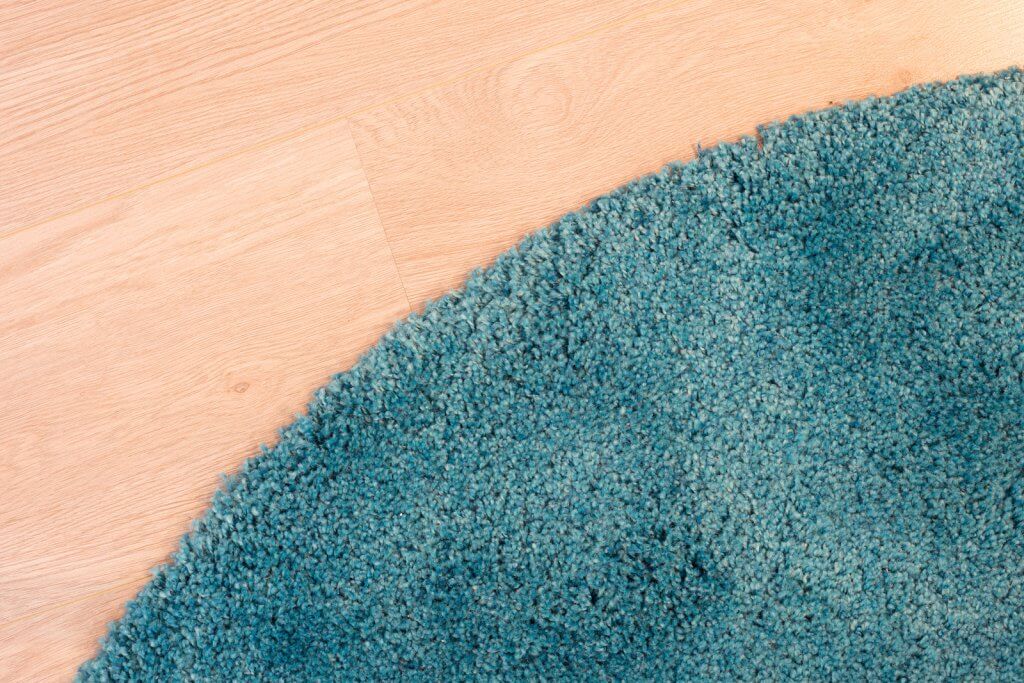
Hydrogen peroxide can be used to remove tough stains from carpets. Blot the stained area with a mixture of hydrogen peroxide and water to lift the stain.
2. Disinfect Trash Bins
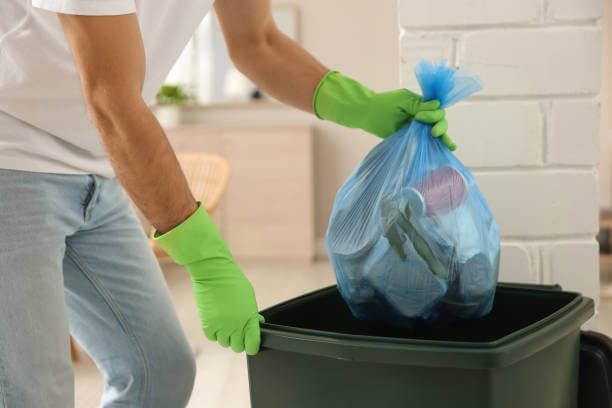
Trash bins, especially those in the kitchen, can develop odors and accumulate bacteria. Spray hydrogen peroxide inside the bin, let it sit for a few minutes, and then rinse it out. This helps eliminate odors and maintain cleanliness.
3. Freshen Up Your Dish Sponge

Kitchen sponges can develop unpleasant odors over time. Soak your sponge in a bowl of hydrogen peroxide for a few minutes to help eliminate odors and kill bacteria. Rinse it thoroughly with water afterward
4. Disinfect and Deodorize Sports Equipment
Sports equipment like helmets, shin guards, and workout mats can become smelly and harbor bacteria over time. Wipe them down with a hydrogen peroxide solution to disinfect and deodorize, leaving them fresh for your next use.
5. Clean and Sanitize Pet Cages

Properly cleaning and sanitizing pet cages are essential for your pets’ health. Hydrogen peroxide can be used to disinfect and eliminate germs in cages for birds, rodents, reptiles, and other small pets.
6. Clean and Disinfect Remote Controls and Electronics
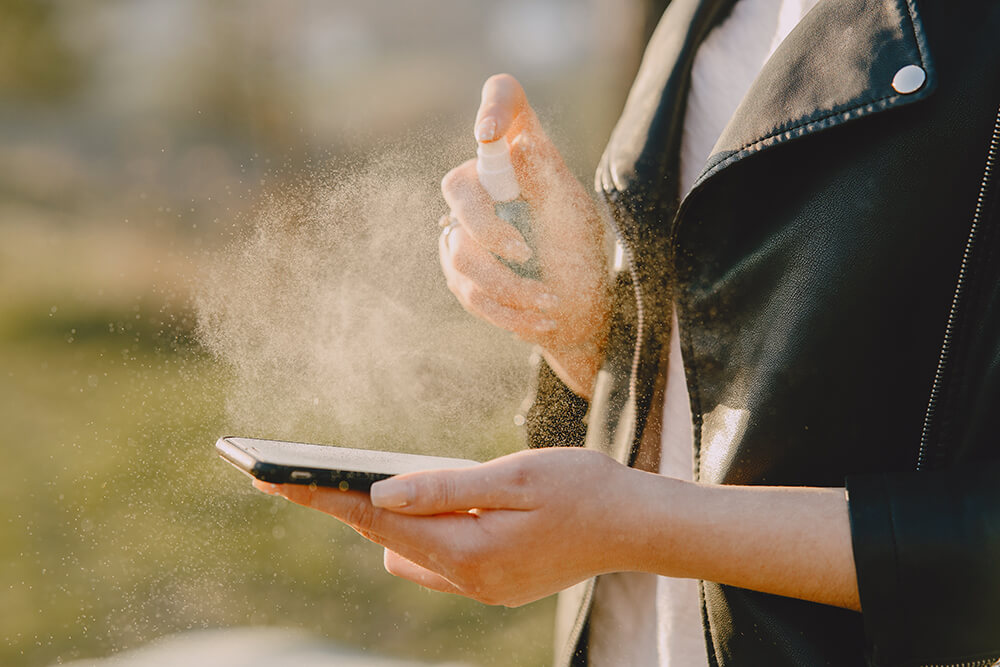
Electronic devices and remote controls can accumulate germs from frequent handling. Using hydrogen peroxide on a cloth to clean and disinfect these devices can help maintain a hygienic environment.
7. Clean and Sanitize High Chairs
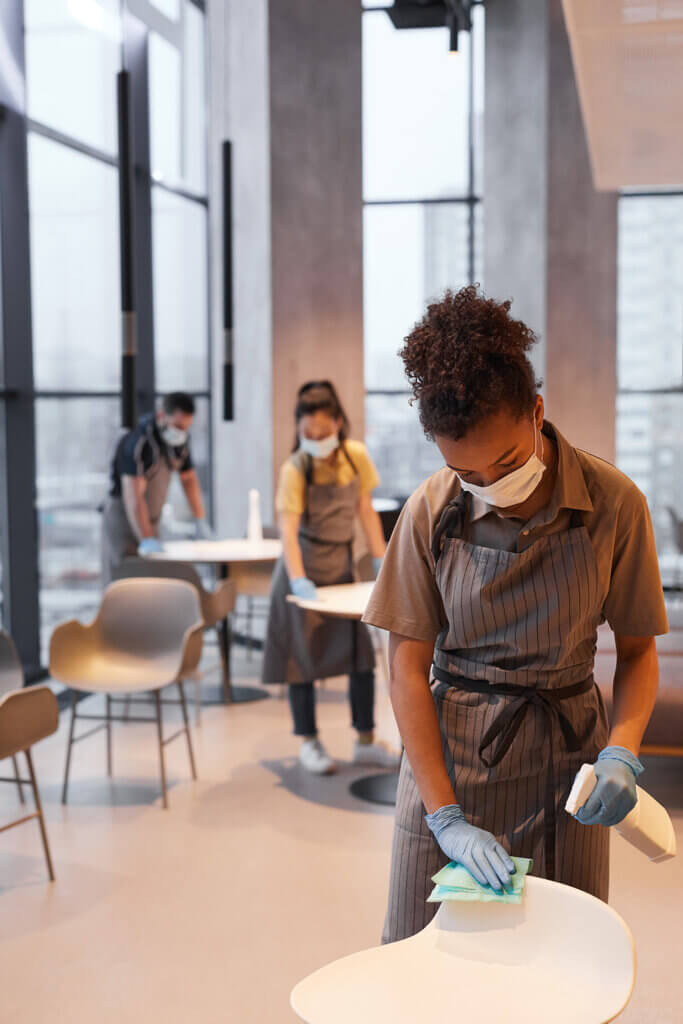
High chairs can get messy! Wipe them down with hydrogen peroxide to clean and disinfect after meals.
8. Remove Rust from Metal
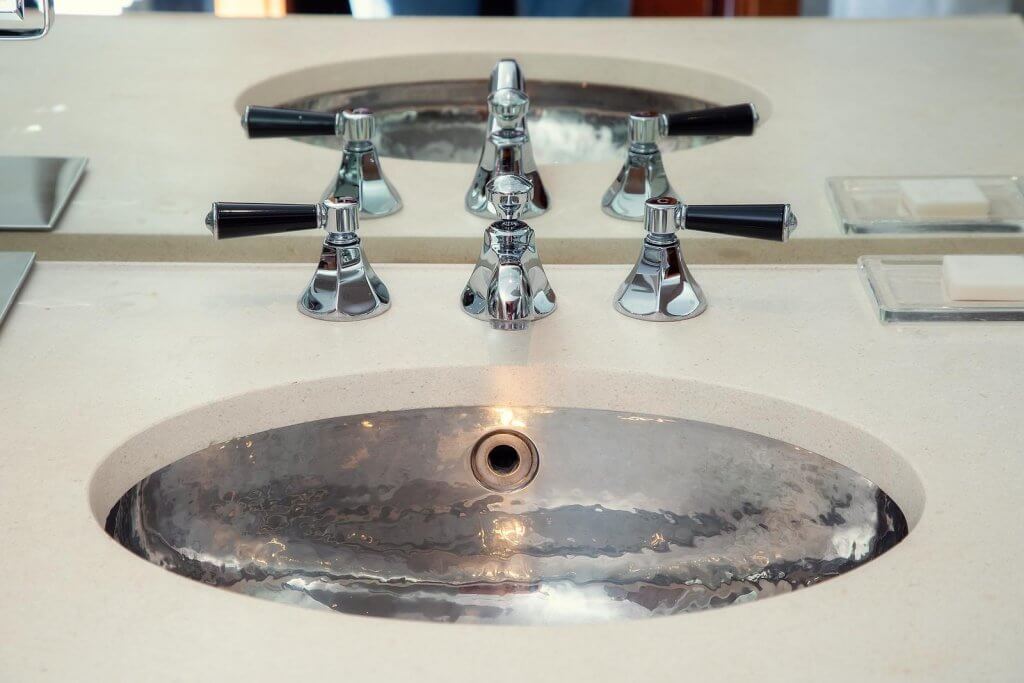
Rust can deteriorate metal objects over time. Hydrogen peroxide can be used as part of a rust removal process to help break down rust and make it easier to scrub away, restoring the metal’s appearance.
9. General Sanitizing for Bacteria Prone Items
Great for killing bacteria, making up a mixture of equal parts hydrogen peroxide and water can be used for sanitizing toothbrushes, combs, razors, and more.
10. Yeast infection in Dogs’ Ears*
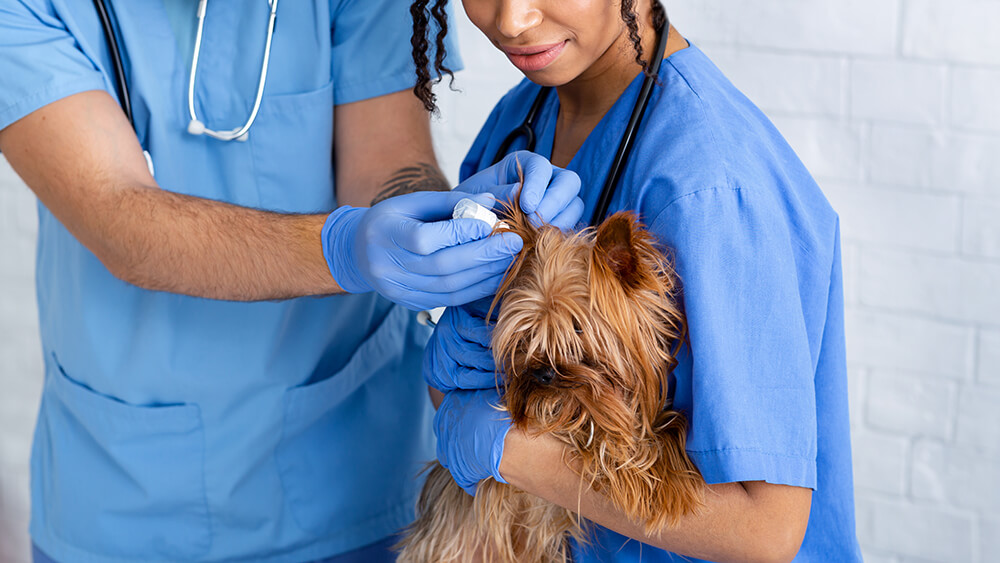
Hydrogen peroxide effectively eliminates yeast but must be diluted first before applying. Veterinarians are in disagreement over whether to use hydrogen peroxide in the ears as it may kill the bacteria present the remaining water after the chemical reaction has occurred isn’t good for them if it can’t be easily gotten out. Dog ears are perfect dark, damp areas already, which leads to infections in the first place, so consult with your vet before trying it.
11. Get Rid of Bacteria in Your Shoes
Spray the inside of shoes with a hydrogen peroxide solution to kill bacteria and eliminate odors. Be careful of the potential for discoloration of the interior fabric.
12. Tools for Manicures, Pedicures, and More
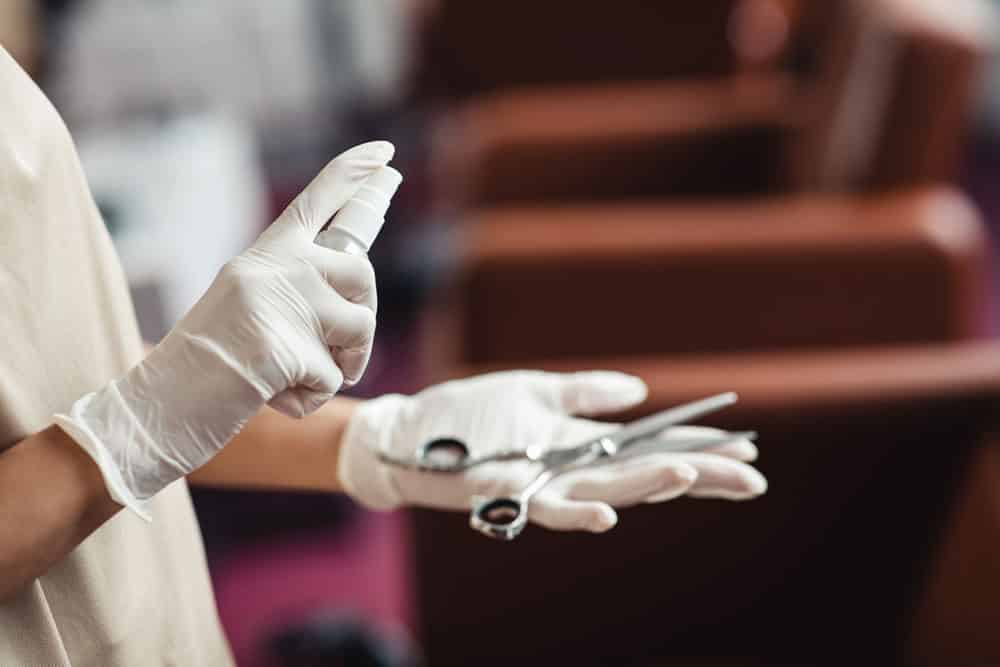
Using tweezers, clippers, eyelash curlers, and razors in close proximity to your skin on a frequent basis can allow bacteria to form and transfer onto you. To sanitize these items, wipe them down with a 3% solution to help prevent infections and kill the bacteria.
Makeup brushes come in contact with a lot of skin bacteria and should be regularly disinfected. Use a spray if diluted hydrogen peroxide on the brush and let it dry.
13. Contact Lens Cleaning
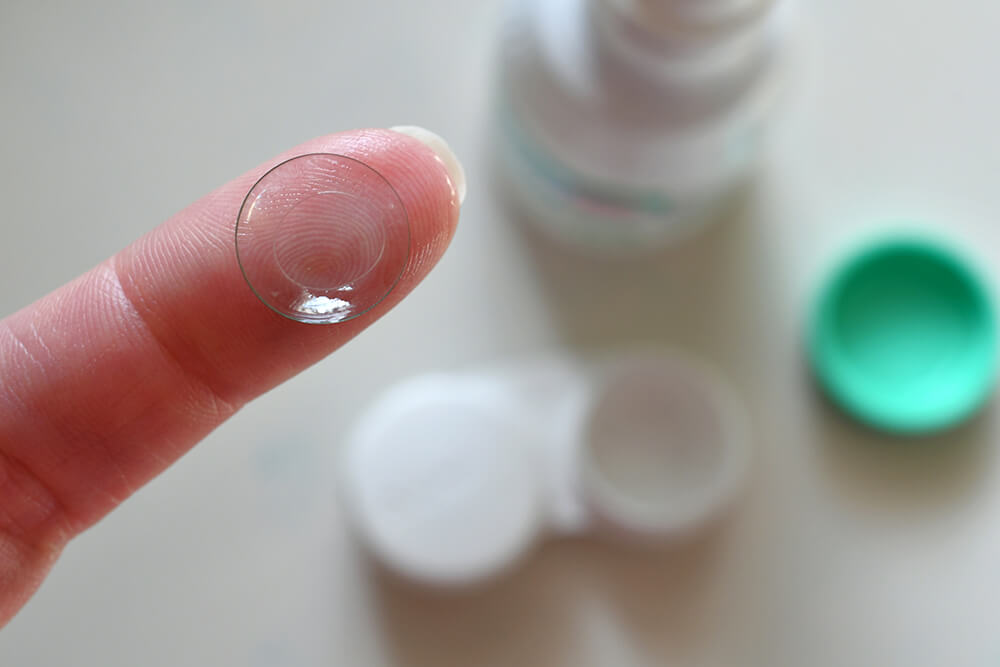
Some cleaning solutions for contact lenses use hydrogen peroxide as the base for their solution and more effective cleaners than non-hydrogen peroxide-based solutions. They are typically used with special cases to hold the solution and lenses with tablets that cause a chemical reaction to neutralize the irritants that would make putting in your lenses the next time unpleasant. So while they are a more effective option, make sure to follow the directions!
14. Cleaning Dental Equipment

Anything that you use to clean, straighten, or maintain your teeth should be regularly sanitized. Soaking them in some hydrogen peroxide will get rid of bacteria. Be sure to always rinse with plain water afterward.
15. Laundry
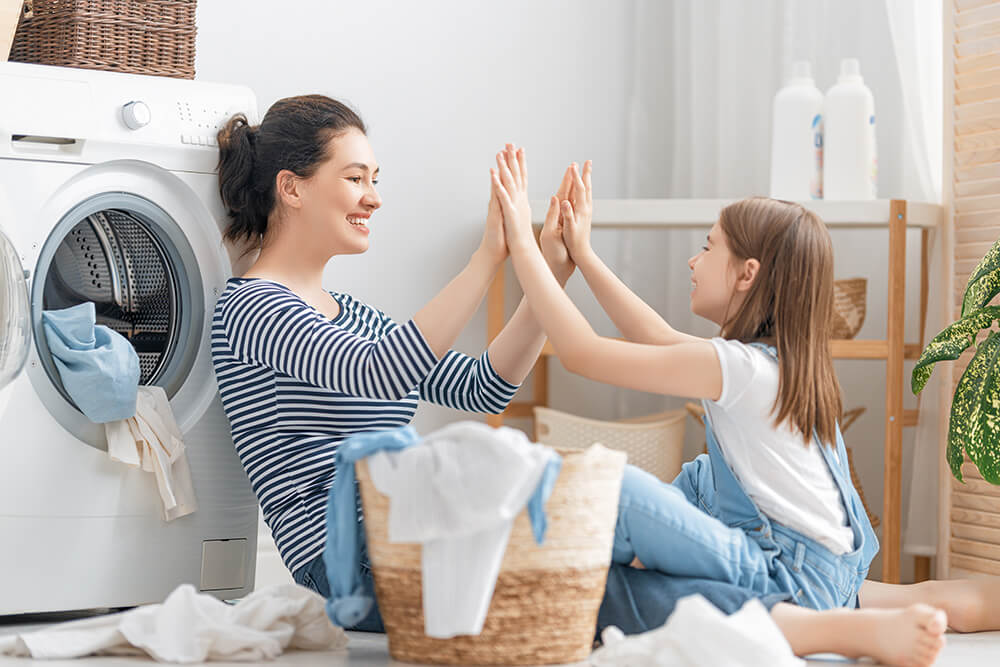
Oxidizing your clothes will help with deodorizing and removing stains and can be done with hydrogen peroxide mixed into your load in the water. For darker clothes, always perform a color-fast test first.
16. Whiten Clothes
Adding hydrogen peroxide to your laundry can also help brighten white clothing; just add a cup to your load of laundry.
17. Remove Sweat Stains and Brighten Discolored Areas
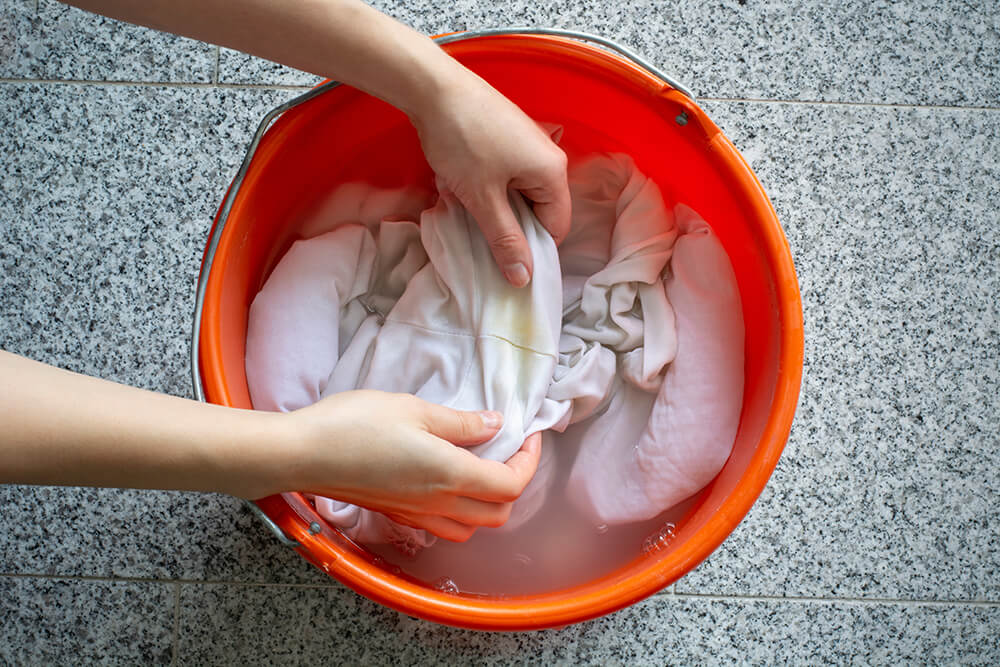
Sweat stains on clothing can be a pain to remove and leave a discolored area visible, especially in white or light-colored clothing. A solution of one-part dishwashing liquid and two parts hydrogen peroxide applied to the stain and left to sit for an hour and then washed in cold water can help get rid of them.
18. Removing Organic Stains
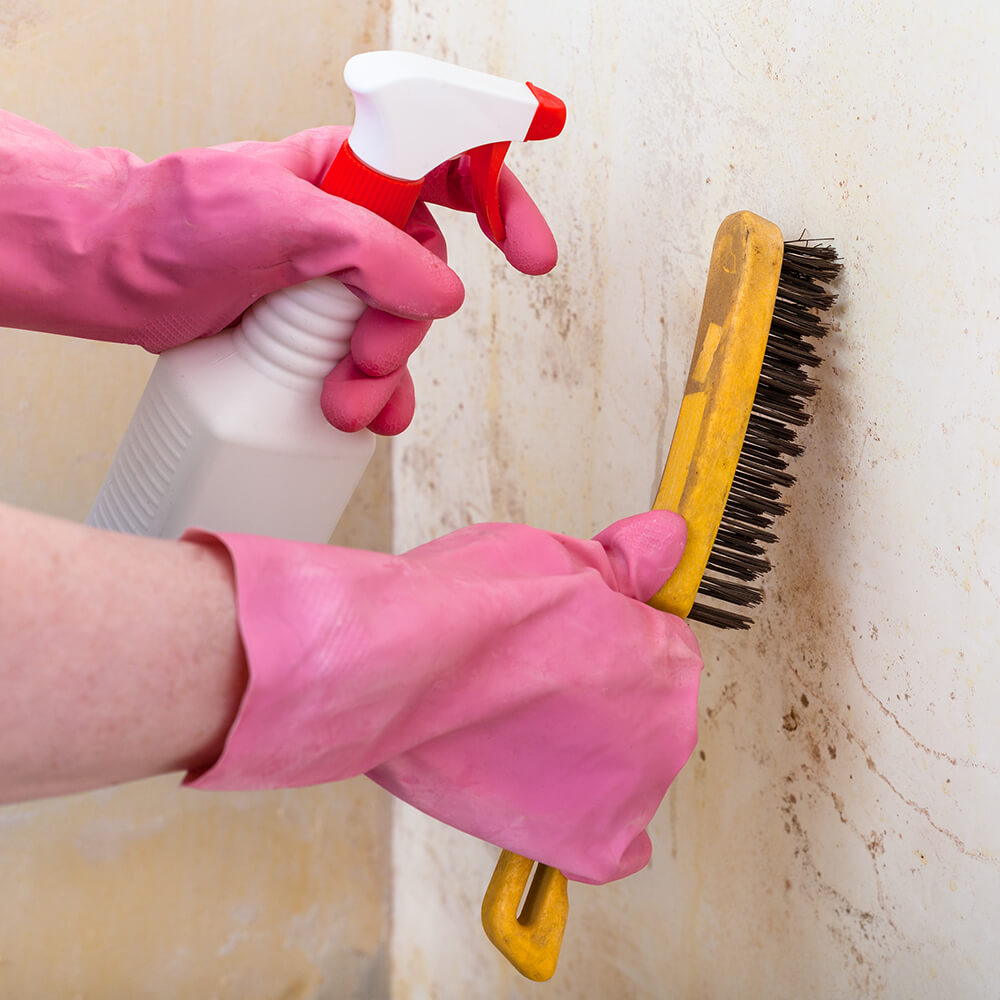
Blood, coffee, and wine set in fast and are difficult to remove. Spray the area with hydrogen peroxide as soon as possible but be careful with dark colors as it may lighten them.
19. Freshening Up Lace and Linen
Lace is very fragile and can be difficult to clean as it must be hand washed. Lace and linen that may have become yellowed with age can benefit from a soak in cold water with about two cups of hydrogen peroxide mixed in for about an hour.
20. Keep Your Fruits and Vegetables Fresh Longer
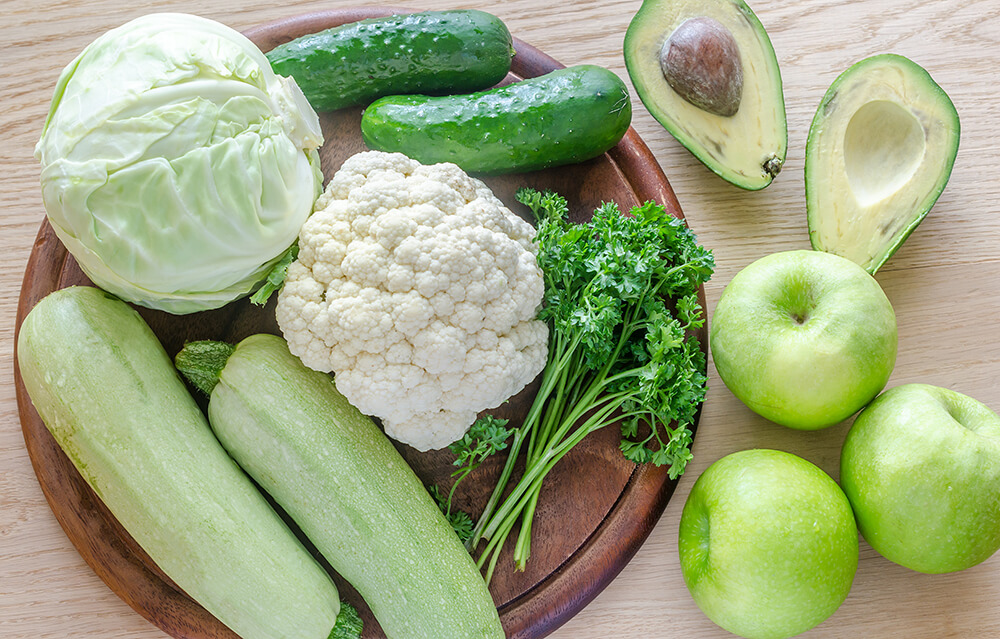
Help keep your vegetables and fruits fresher for longer by spraying them with a little hydrogen peroxide but always be sure to rinse them before eating. It is also very useful in removing any dirt, bacteria, or pesticides right when you bring them home. A little spritz can add a few days before they start to get soft.
21. Get Rid of Baked On Food
A paste made of baking soda and hydrogen peroxide can be used to scrub up pots and pans that have baked-on, hard to remove food and stains. Leave it to sit for a while if needed. Once the chemical reaction has occurred, all that is left is plain water, so it is safe to be on your hands if you don’t want to use dishwashing gloves.
22. Brighten Discolored Dishware
Getting of stains on dishes, pots, and pans can be done with the baking soda and peroxide paste as well.
23. Disinfect Kitchen Sponges
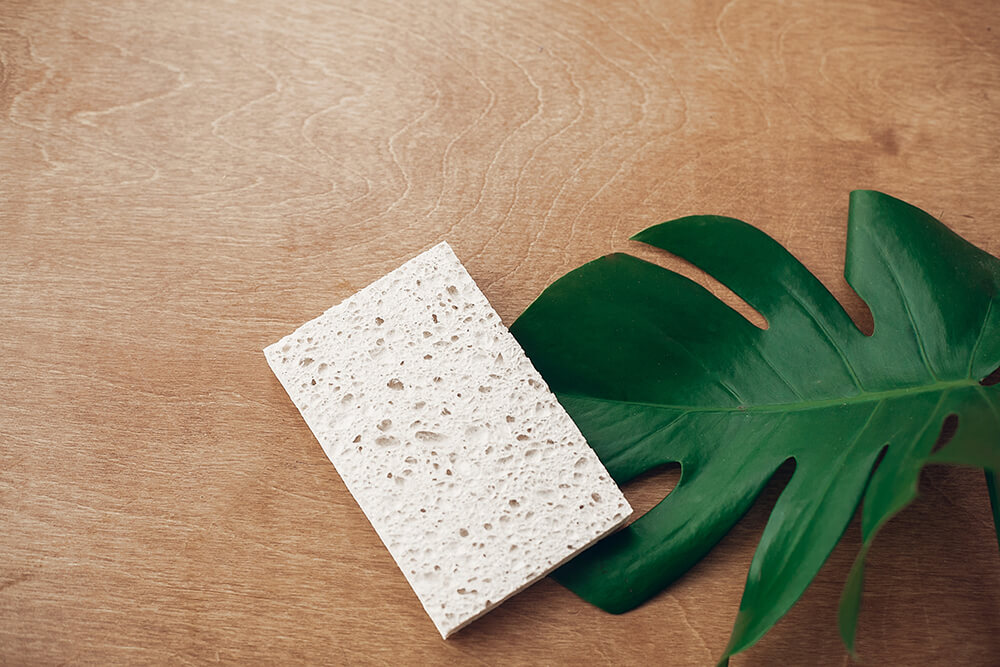
Kitchen sponges are a common place for bacteria to grow, sometimes resulting in an unpleasant sour smell. You can sanitize your sponges by soaking them in a bowl of one-part hydrogen peroxide and one part warm water for about 10 minutes, then let them dry.
24. Cutting Boards & Food Prep Areas
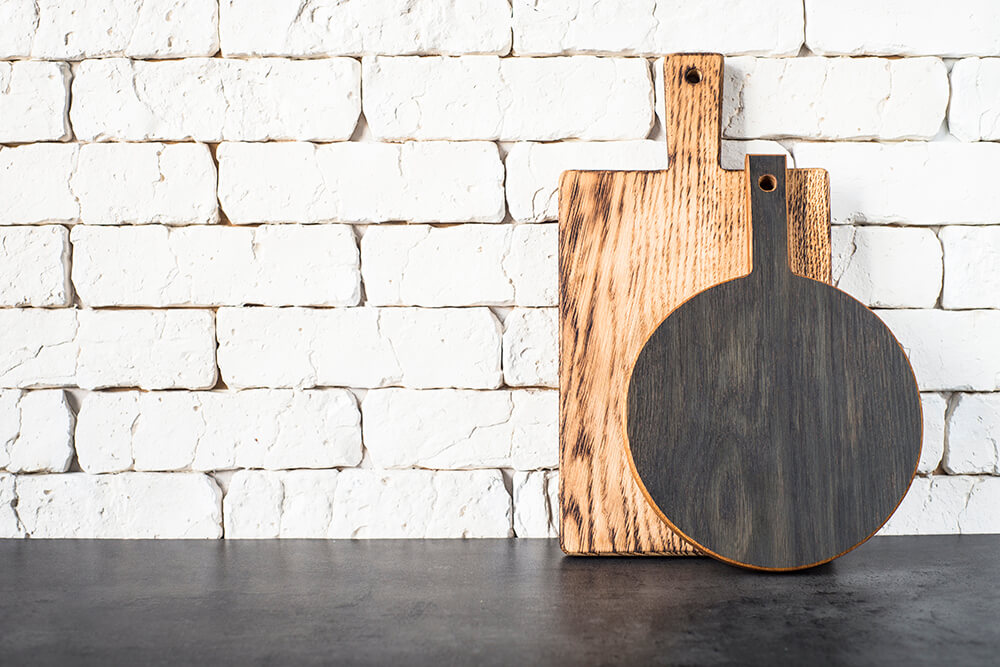
Wiping down counters, sinks, and cutting boards can give food prep areas a good quick clean.
25. Clean Up Your Refrigerator
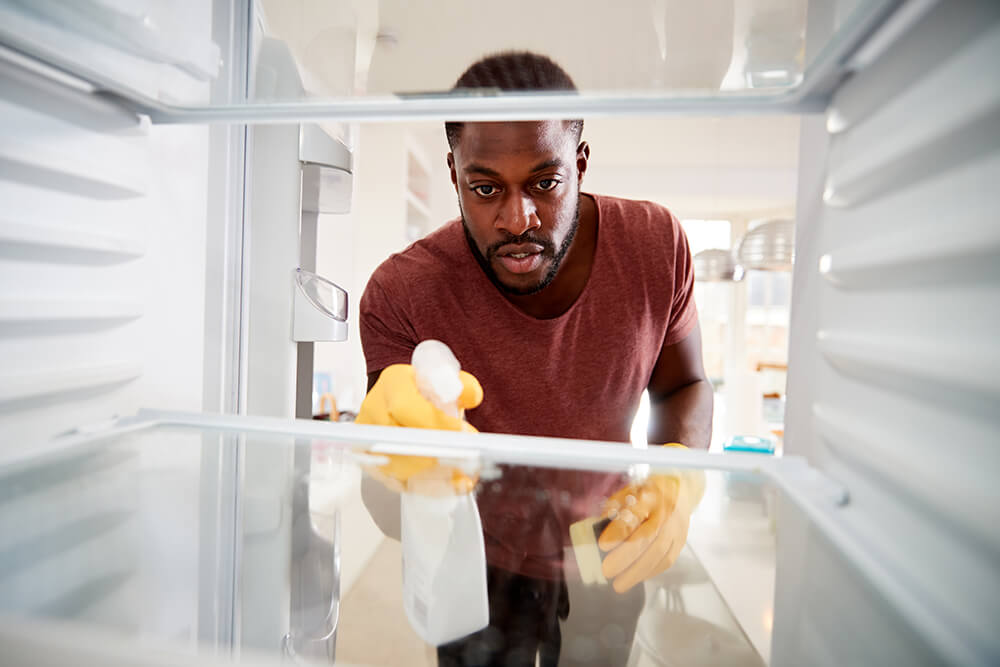
Wipe down your refrigerator’s drawers, shelves, and racks to get rid of any lingering odors, bacteria, or mold that may be growing. Once it breaks down after being exposed to light and air, it leaves no harmful residue.
26. Insulated Bags and Coolers

Wiping these items down with a diluted solution can help with mildew, bacteria, and gives them a good cleaning at the same time without leaving any harmful chemicals behind.
27. Get Rid of Mold and Mildew
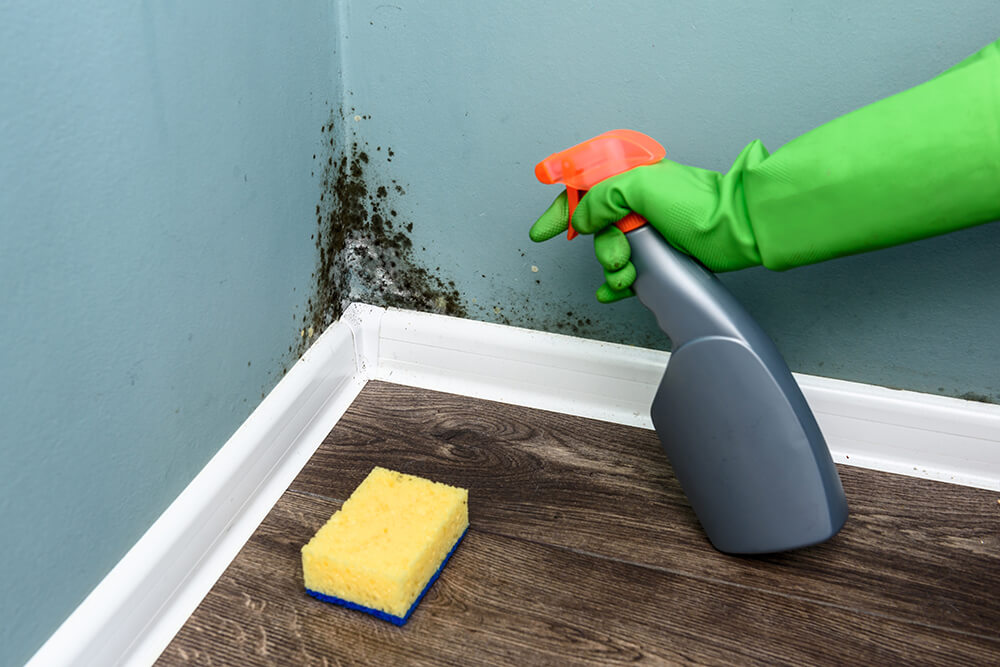
Hydrogen peroxide kills bacteria and gets rid of mold and mildew that grows in bathrooms and basements. Mix up a diluted solution and use a spray bottle or mop and bucket for large areas.
28. Spruce Up Your Flooring
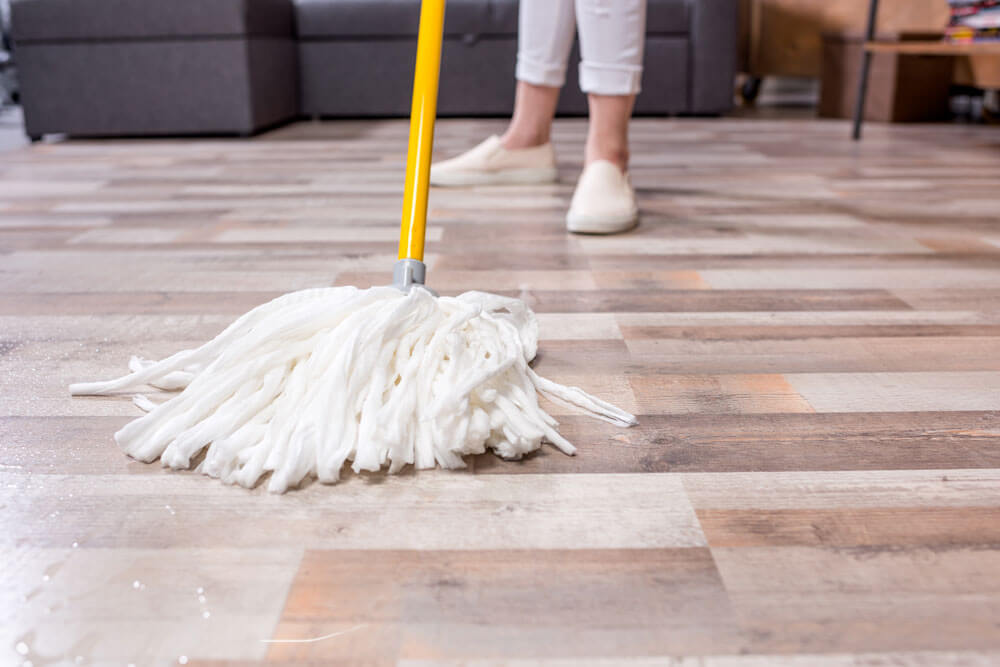
Mop your floors with a solution of ½ cup of hydrogen peroxide and hot water to clean, brighten, and return your floors to a fresher look.
29. Lunch Boxes, Food Storage Containers, and Sealable Bags

Lunch boxes can develop a smell after many uses holding chilled food as the evaporation of ice packs, or condensation gets into the lining. A wipe down of the inside with hydrogen peroxide can get rid of bacteria, mildew, and will freshen up the smell. Sealable bags and plastic food storage containers can also benefit from a quick wipe down to remove lingering odors.
30. Cleaning and Whitening Your Dishwasher
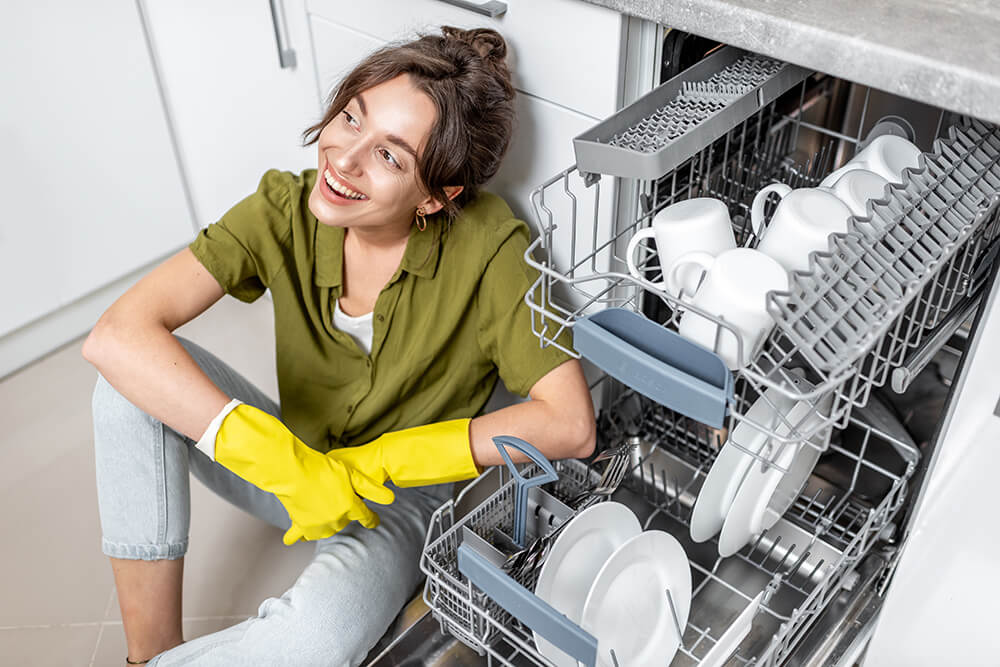
Spray hydrogen peroxide directly into the interior walls and racks, let it sit, then wipe it out with clean water and a rag. You can also run a short cycle on an empty machine to make sure it has all been removed.
31. Keep Your Fish Tanks Clean of Bacteria and Fungus
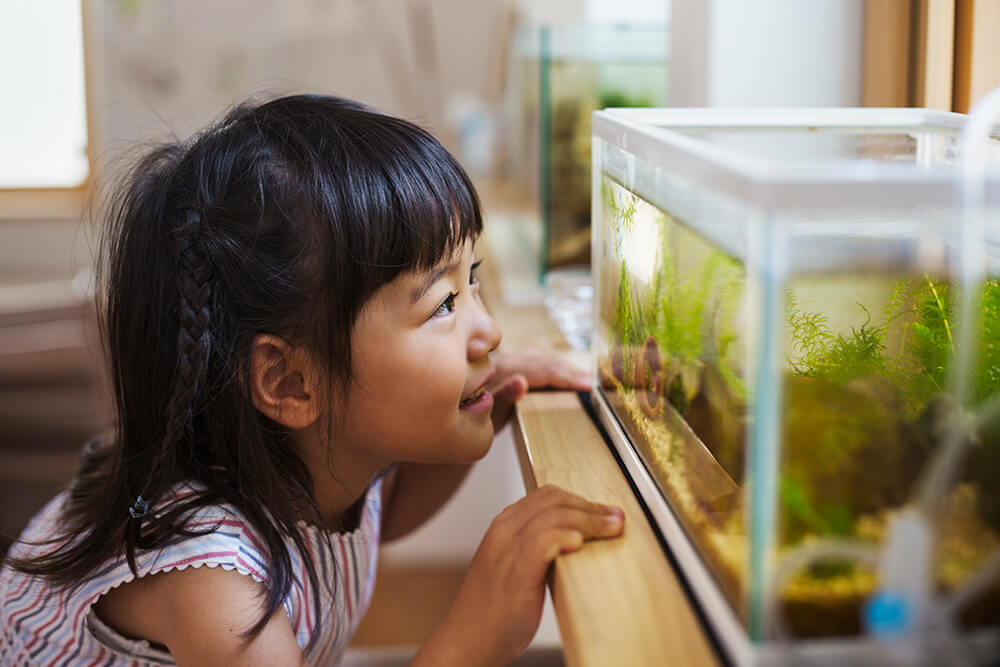
When cleaning your tank, a few drops of hydrogen peroxide mixed in will help control the fungus that may be growing as well as bacteria. It should be used sparingly if fish are present in the tank. Still, the oxygen released during the reaction process can actually be a boost, particularly if algae is being removed.
You can also put your aquarium plants into a mixture of 2-3ml of 3% hydrogen peroxide per gallon of water to help them with algae, bacteria, and parasites. Submerge them for no more than 5 minutes. (Particularly effective against the pervasive black beard algae)
For help with removing large areas of algae in outdoor ponds, a higher concentration of hydrogen peroxide can be used, but strict guidelines should be followed as well as all safety information.
32. Boost the Health of Your Fish
As hydrogen peroxide decomposes, when exposed to a particular catalyst like air or light, it separates into plain water and an extra molecule of oxygen. These extra molecules can provide extra oxygen to small fish. The chemical reaction itself will also remove microbes that can affect the health of freshwater fish.
33. Brighten Up Tile Grout
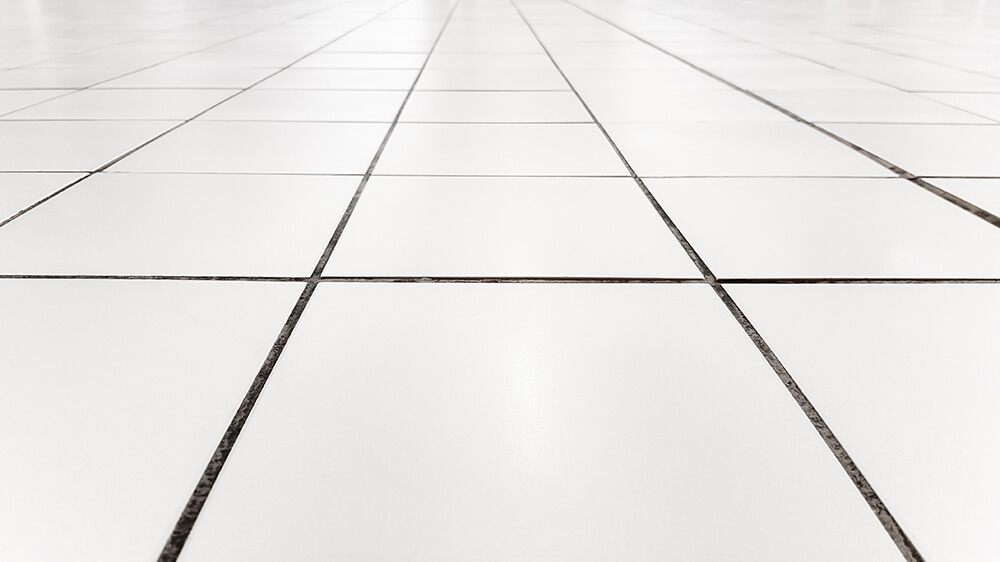
Over time your grout can get dirt ground into it, or liquids may get sullied, causing discoloration. To clean it and brighten your grout, you can make a paste with baking soda and scrub with a brush for smaller patches or pour the hydrogen peroxide directly onto grout in larger areas and let it sit, then rinse off with plain water. The best part of hydrogen peroxide is that once it begins to break down after use, it leaves no harmful residue and becomes plain water.
34. Put a Shine on Your Mirrors
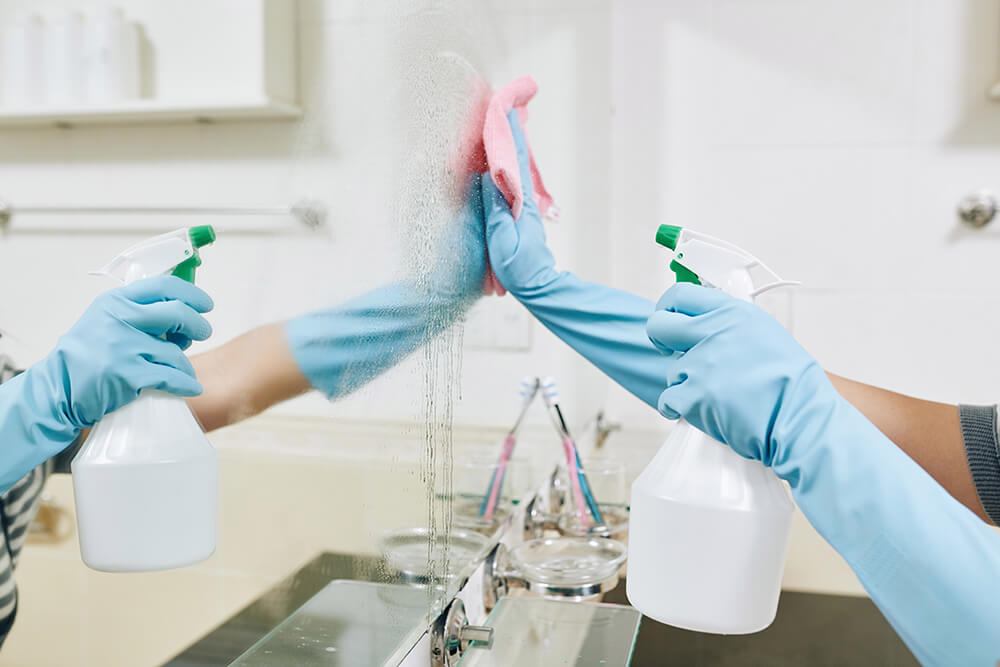
Leave a streak-free shine on mirrors and windows with a spray bottle of hydrogen peroxide. It uses no harsh chemicals and has no residue.
Tip: Old-school newspaper is still one of the best things to use, but if you don’t have any newspaper, a microfiber rag works best. Newspaper is made from recycled paper turned into a mulch multiple times, so the scratchiness of regular paper is pretty well gone.
35. Get Rid of Dust Mites in Your Mattress
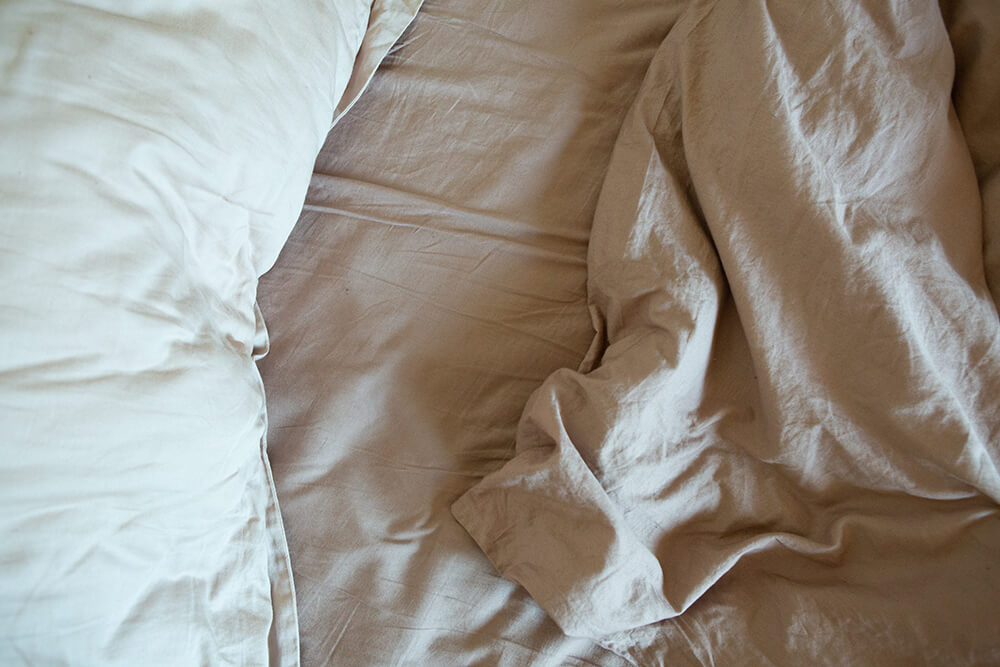
Your mattress should be aired out each day to help prevent dust mites from multiplying in your bed and to help disinfect it, a diluted solution of hydrogen peroxide and essential oils in water can be used to spray the surface, getting rid of dust mites, bacteria, and leaving a pleasant smell behind.
36. Cleaning Kids’ Items and Pet Toys

Hydrogen peroxide is a great option to use on toys and in kid-safe spaces as it won’t leave behind any chemical residue. Wiping or spraying down areas where kids and pets play with a diluted mixture will leave the area clean and fresh.
37. Cleaning and Sanitizing Your Bathroom

Clean your toilet bowl by pouring about a cup of hydrogen peroxide into the bowl and let it work for a little while. Once the fizz stops, use a toilet brush to scrub it down.
38. Sanitize Your Humidifier and Dehumidifier
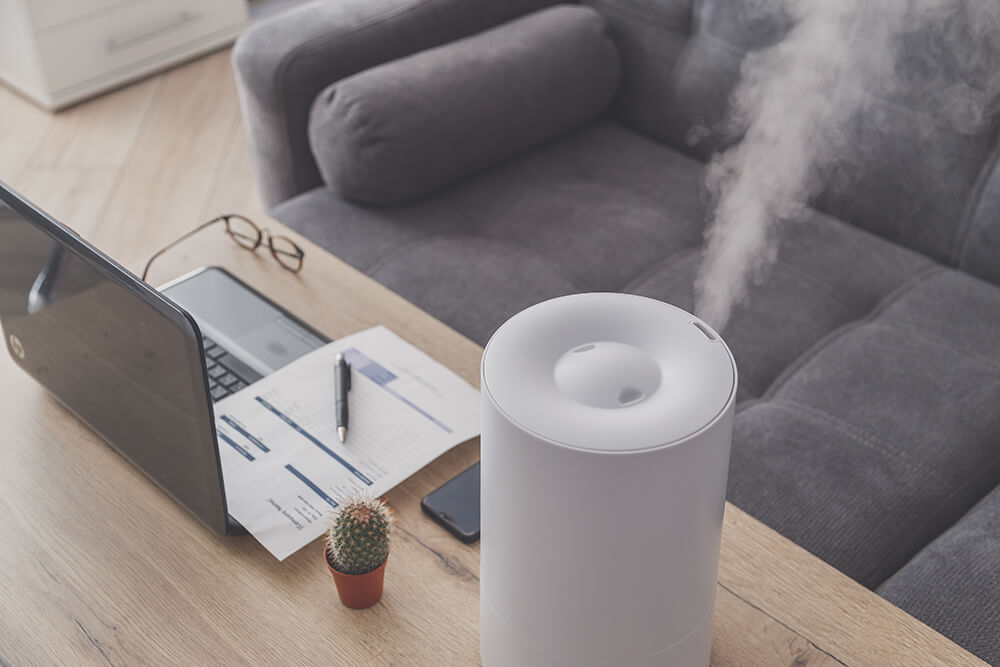
Bacteria, mold, or mildew that may grow inside your machines can be taken care of by spraying them down with hydrogen peroxide.
Guidelines for CPAP breathing machines will give approved methods of cleaning the tunes and water reservoirs. You can use hydrogen peroxide in a diluted mix with water as a good option for disinfecting the equipment as well as the face mask. The face mask, in particular, comes into contact with both skin bacteria on your face, but it is also exposed to bacteria from your mouth and should therefore be wiped down after each use if possible.
39. Hydroponics
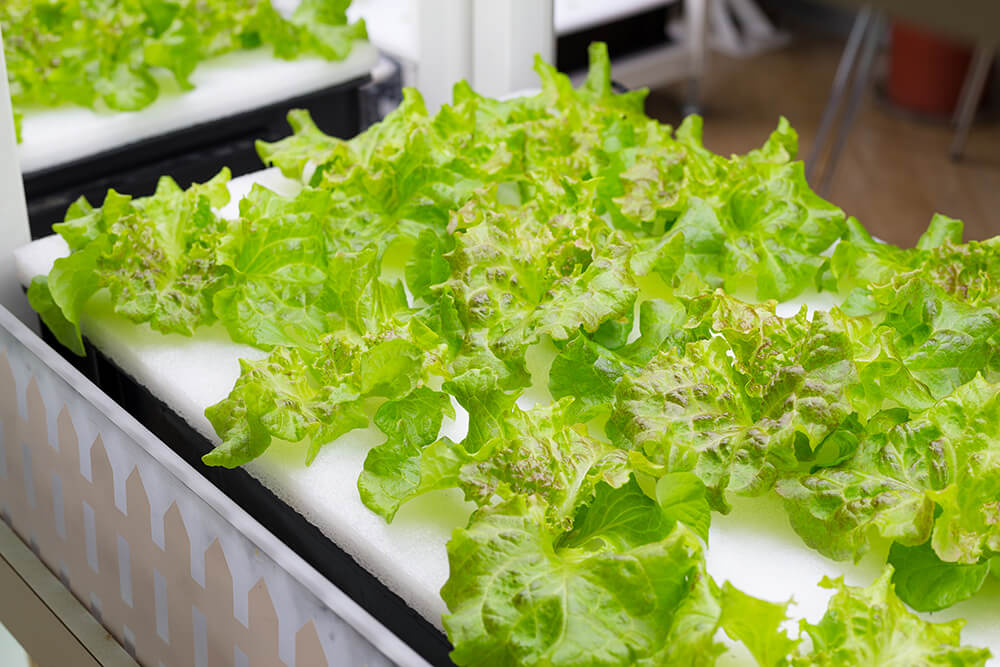
The reservoirs in hydroponic systems should be regularly cleaned. One option is to use fresh distilled water, for best results, and add 2-3 teaspoons of the 3% solution per gallon of water in the reservoir. Be extremely careful with amounts and, if possible, check your local hydroponics store for charts and measurements that may help. A carefully added amount can result in healthier plants with improved growth and yield.
40. Help Your Garden Grow
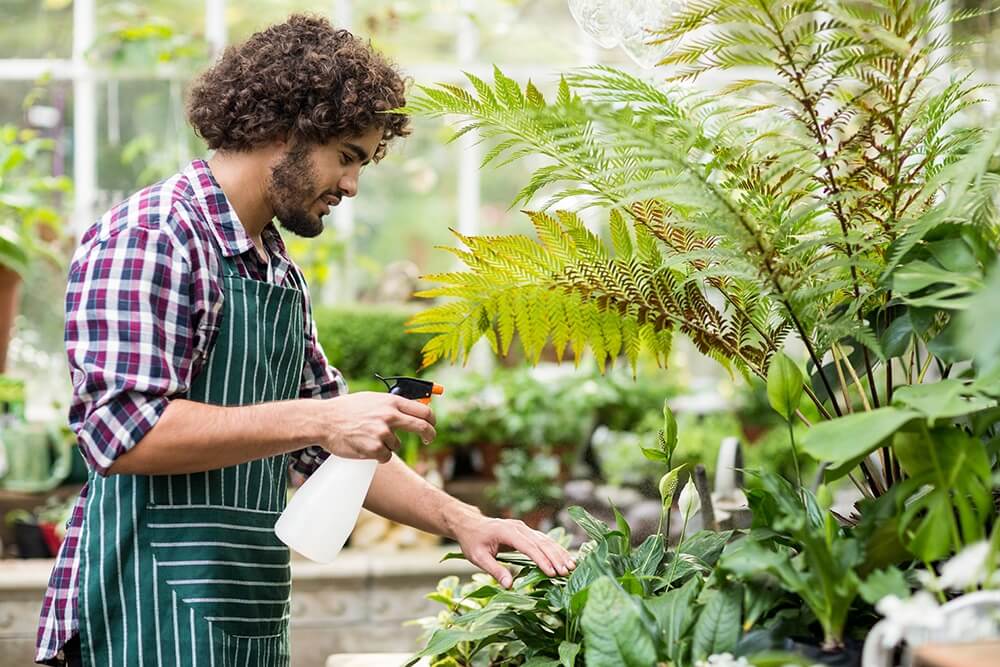
Adding hydrogen peroxide to your garden can improve growth and help get rid of pests. Add one teaspoon to one cup of water and spray. The extra oxygen that comes from it in the soil can also help plants absorb more nutrients.
41. Protecting Your Plants from Disease
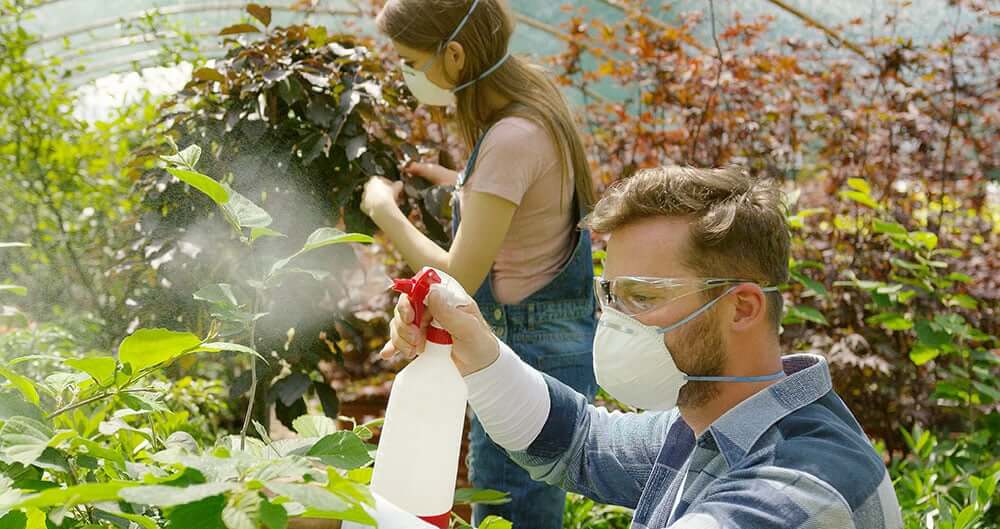
Mix a solution of one tablespoon hydrogen peroxide per cup of water and add into the soil around your plants to defend against root rot and fungal infections.
42. Give Oxygen to Growing Mushrooms
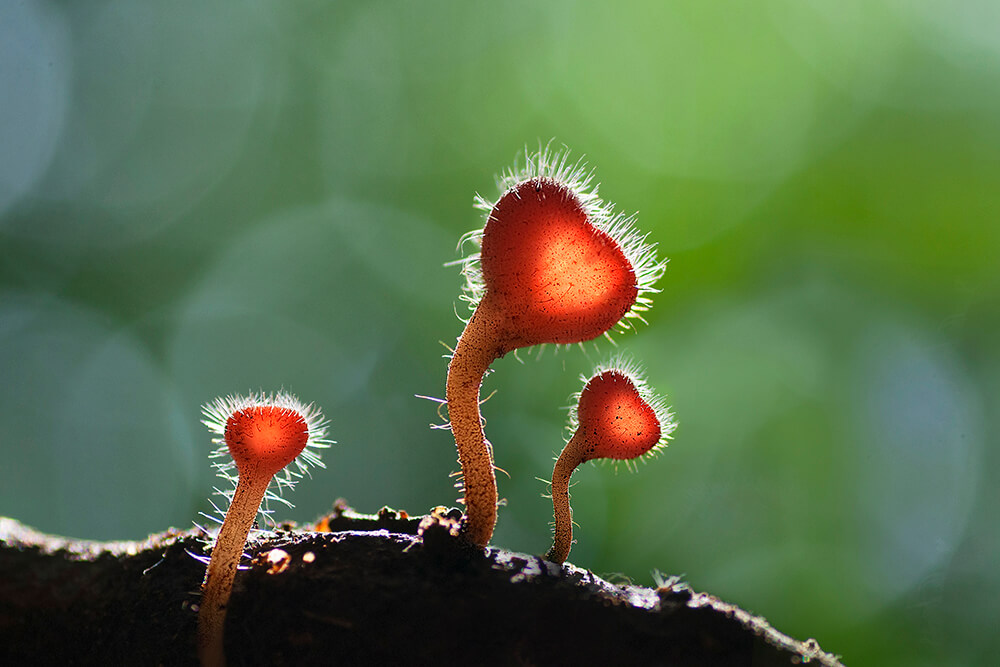
Adding a few drops of the 35% food-grade hydrogen peroxide to your mushroom crop can help get rid of mold infections and add oxygen.
Whenever you are using the 35% solution, be assured to follow all safety guidelines, and wear appropriate protective gear.
43. Skunk Smell

The smell of skunk is one of the most difficult to remove. Make a mixture as outlined below and apply it to the affected person or animal, being careful not to leave it on too long on hair or fur to avoid lightening the color.
44. Enrich Your Plant Seeds
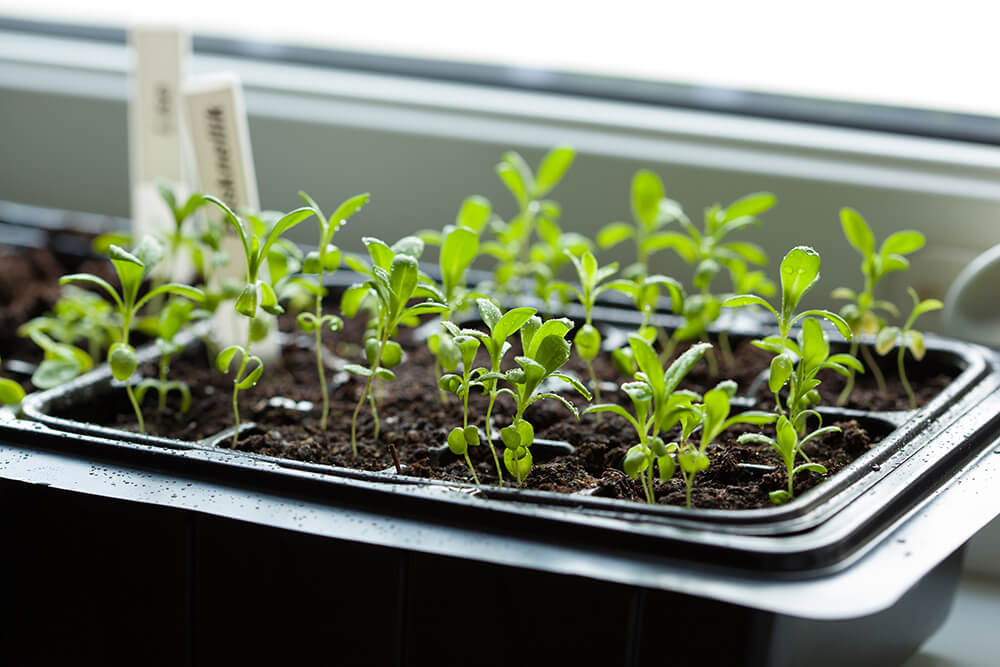
Adding a few drops to the soil around your seedlings can provide a little additional oxygen helping them to take root. Spraying your seedlings while still in their pots will add a little moisture and oxygen to them, and once they can be planted in the ground, a little extra of one ounce per quart of water will help the root systems establish themselves.
45. Plant Health
When a pathogen attacks a plant, one of the first things it will do is produce hydrogen peroxide to strengthen the cell walls and create a barrier to prevent the pathogen from spreading. For this, you don’t need to do anything. It’s just an added bonus plants have figured out on their own!
46. What’s in a Glow Stick?
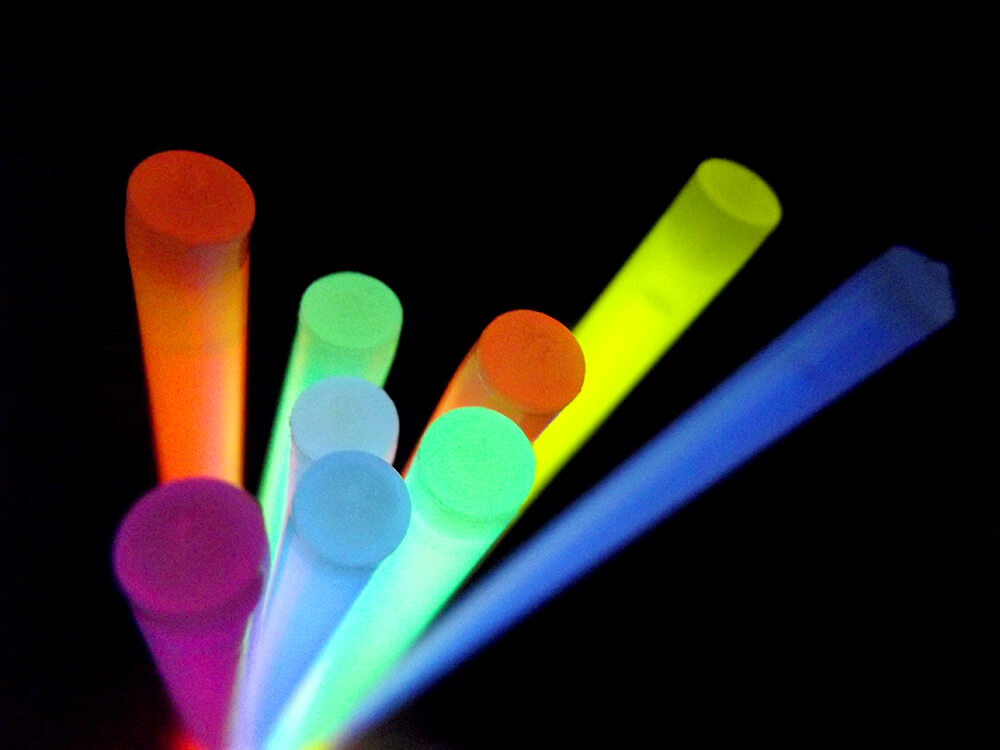
For something a little more fun, the glow stick gets it’s signature “glow” from a chemical reaction. They are made with two containers, an outer flexible plastic case and a fragile glass case inside. The chemicals in the outer case are a base catalyst and a suitable dye; when the container is bent, the inner glass container breaks, mixing it’s chemical in with the others, causing the “glow.” The inner glass container is filled with – hydrogen peroxide!
Glow sticks are frequently used for fun at parties, concerts, and outdoor events at night. However, they are also used for search and rescue operations, as emergency light during power outages, and are especially useful underwater.
47. Water Purification
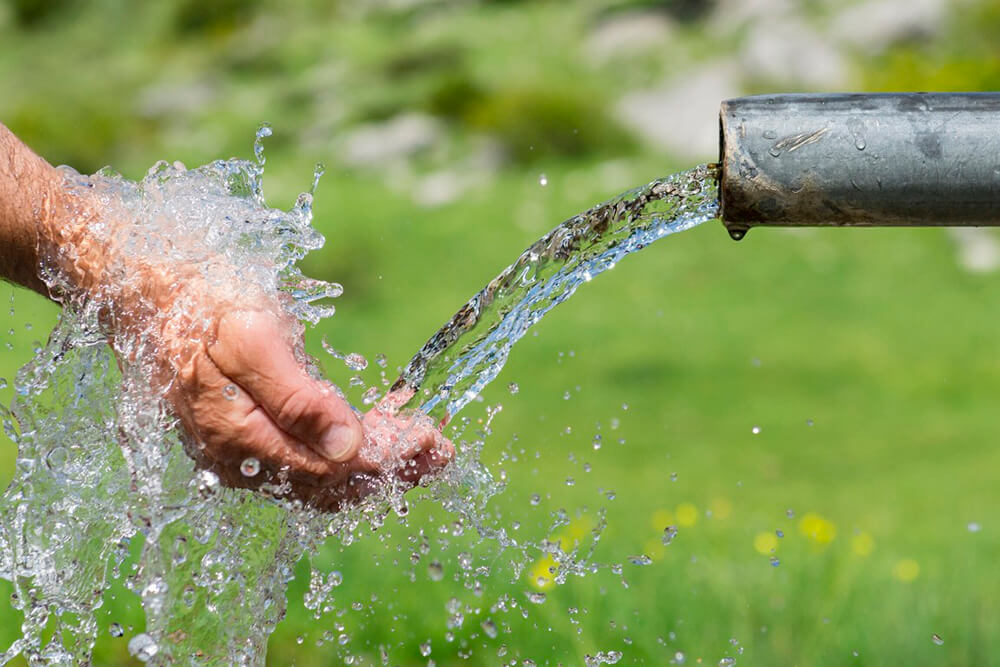
A solution with low concentration can be used to disinfect water that has been contaminated with pathogens. High concentrations can be used with UV light to decontaminate water that has been polluted with industrial waste. Ongoing research into this field could have enormous implications for purifying large amounts of water.
Water. Researchers are actively investigating whether hydrogen peroxide could be a solution for getting purified water to remote areas of the world. Potable water is necessary for any community to thrive and yet attempts to bring in purifying equipment or chemicals have been extremely cost-prohibitive. Tests are being done now to alleviate that cost by turning contaminated water into hydrogen peroxide, then allowing the normal chemical reaction to take place, which would both purify and turn it back into plain water.
48. Rocket Fuel

No, really. Concentrated hydrogen peroxide has been used as a propellant in rocket fuel. Also referred to as “High-Test Peroxide,” it is a reactive oxygen species that can be used as a propellant. The 90% concentration is remarkably stable and has been used by the Russian space force for the past few decades.
While not impossible to obtain, it is a little difficult and requires specific containment measures similar to storing gasoline or kerosene. While hydrogen peroxide is not flammable, the extreme oxidation can cause extreme burns on the skin. It does not ignite like the fuels the US space program uses to create the force necessary to lift a rocket. Instead, it is put in contact with a catalyst like silver to create an explosion of force and pressure.
Stunt cars, modified motorcycles, and jet pack experiments prefer to use the heavily concentrated hydrogen peroxide to fuel their propulsion systems as it is stable, will not catch on fire, and only leaves water as a residue.
Hydrogen peroxide is just water with some extra oxygen molecules attached, which makes it very unstable. It wants to get rid of those extra molecules as soon as possible, so it tends to react with a wide array of catalysts. Light, air, and heat alone are enough to make it revert just by themselves. So be sure to properly store your bottle and enjoy trying out a few of its benefits.
49. Chlorine Alternative

Hydrogen peroxide is a versatile and eco-friendly alternative to chlorine in various applications. Its effectiveness as a disinfectant and sanitizer makes it a popular choice for pool and spa owners looking to maintain water quality without the harsh chemicals often associated with chlorine. Hydrogen peroxide effectively eliminates harmful microorganisms, algae, and organic contaminants in water, providing a safer and gentler option for swimmers and the environment. Moreover, hydrogen peroxide doesn’t produce the strong chemical odors or irritate the skin and eyes, offering a more pleasant swimming experience. Whether for pool maintenance, household cleaning, or wastewater treatment, hydrogen peroxide serves as a sustainable alternative to chlorine while ensuring clean, safe, and refreshing water.
50. Science Experiments
Hydrogen peroxide can be the star of a thrilling and educational science experiment, much like the famous “elephant toothpaste” demonstration. By combining hydrogen peroxide with a catalyst like potassium iodide or yeast, you can witness an exothermic reaction that results in an impressive foamy eruption. This visually captivating experiment showcases the rapid decomposition of hydrogen peroxide into water and oxygen gas, generating a dramatic explosion of foam. It’s a fantastic way to engage budding scientists, teaching them about chemical reactions, catalysts, and the properties of hydrogen peroxide—all while sparking their curiosity and enthusiasm for the world of science.
